8.3 What Distinguishes the Sexes?
Is it the penis?
Your initial thought for what distinguishes male from female may be the presence or absence of a penis. And the presence of a penis would certainly help you distinguish between a male and female wolf, killer whale, or guinea pig. Yet, in the examples on the previous page, only the male snake, the male chameleon, and the male butterfly have a penis. The superb fairy wren males don’t have penises, neither do male holly trees, goldfish, or seahorses. Plants, songbirds, and fish don’t have penises, and seahorse and hyena females have structures that resemble a penis.
Is it the chromosomes?
You may have thought to look for chromosomes (long stretches of DNA) that can distinguish male from female. In a species in which male and female look similar, and in which males lack a penis, chromosomes may be helpful. However, not all organisms have sex determined entirely by genes on specific chromosomes. In the previous examples, the birds, butterflies, and snakes have chromosomes that can indicate sex, but the chameleons do not!
Is it body size?
Many organisms have a size difference between the male and female. The average male gorilla is about twice the size of the average female. Male northern elephant seals are three times the size of females.
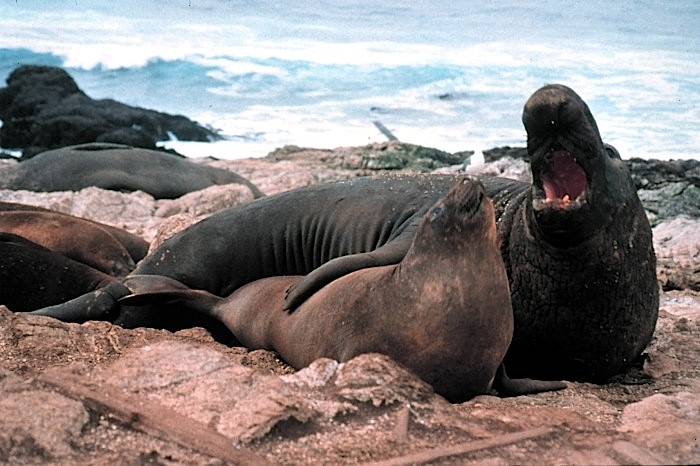
However, this pattern of size difference does not hold up for all species. The Oval St. Andrews Cross spider male is 1/10th the size of the female.
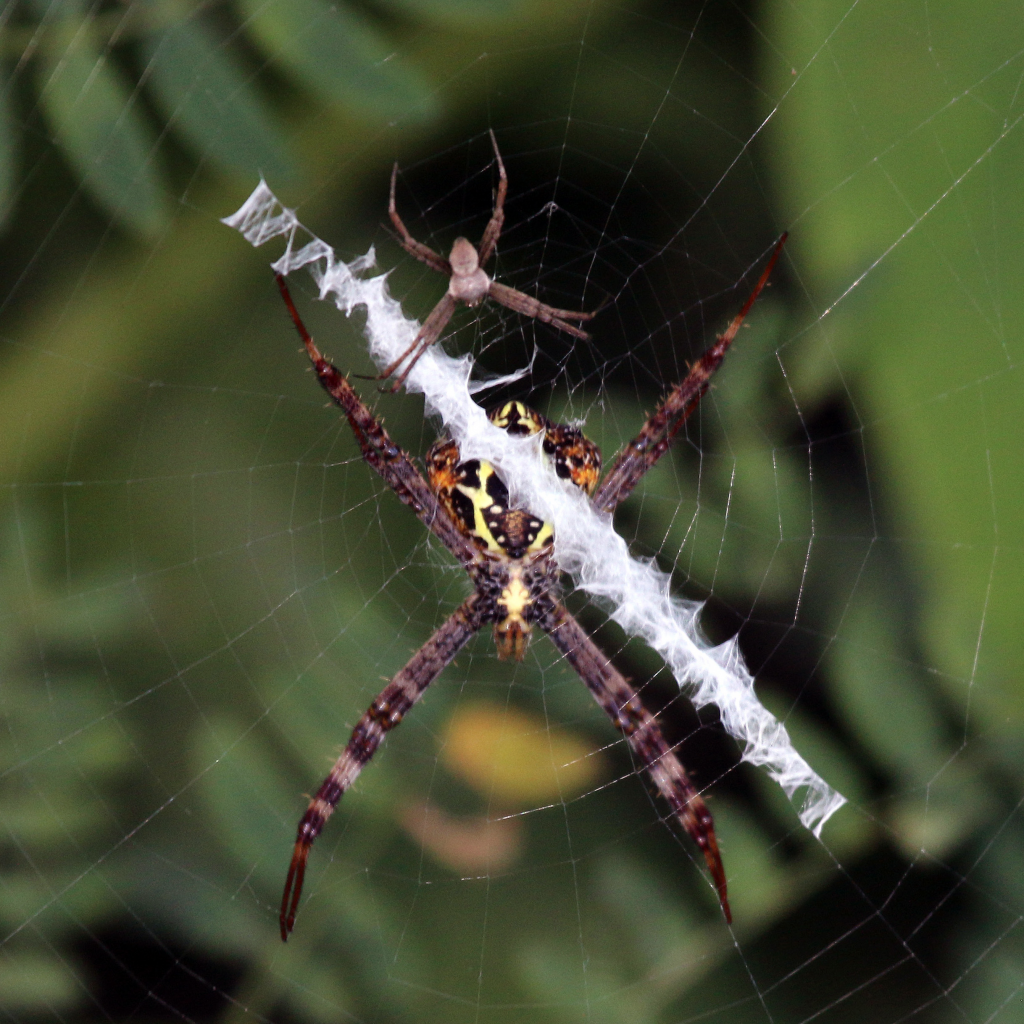
The tree frog female is also significantly larger than the male.
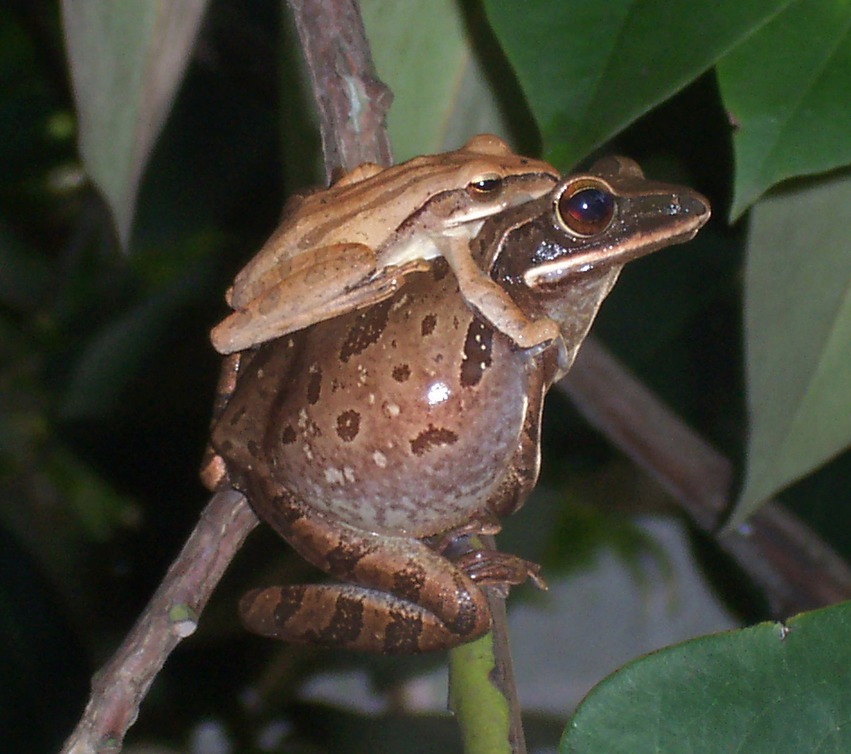
For tarsiers and albatrosses there is no size difference between males and females.
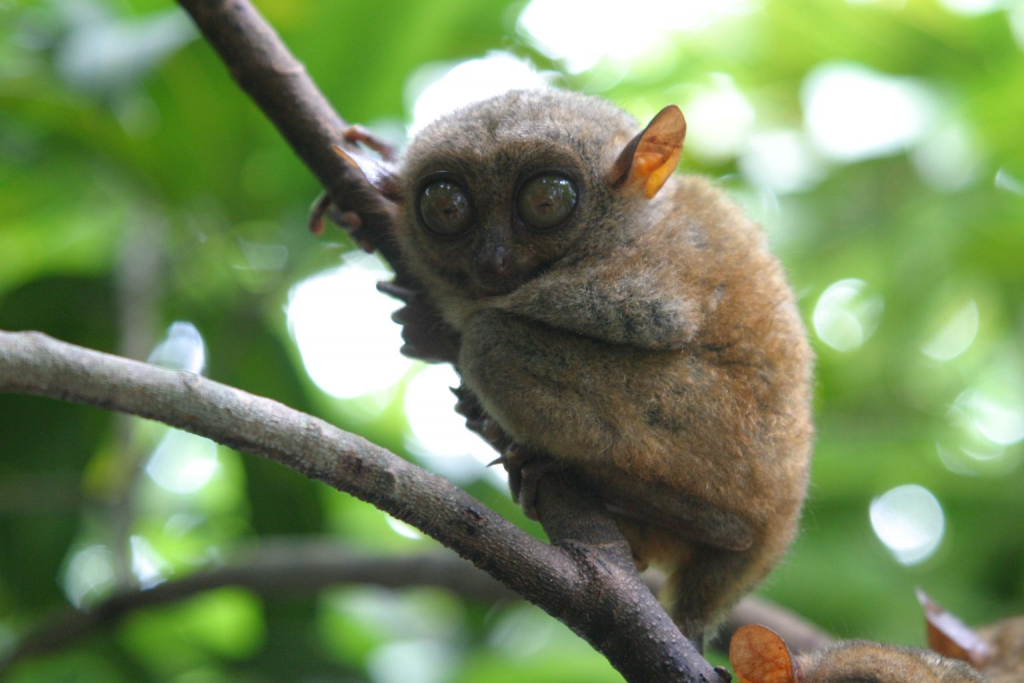
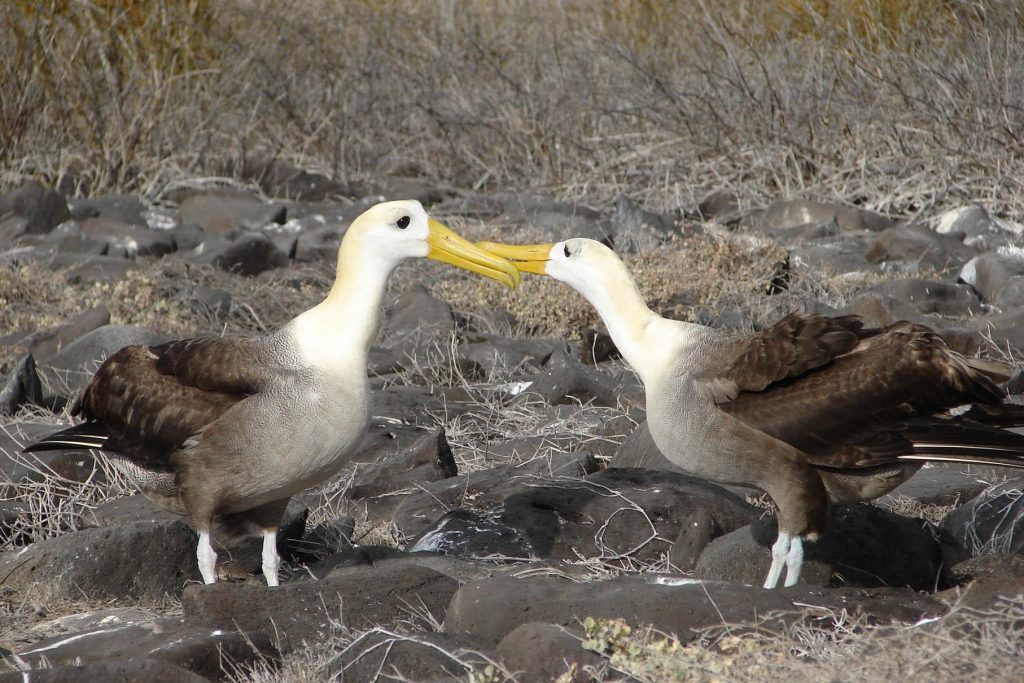
- original image by Jan Roletto, uploaded 18:58, Feb 26, 2004 - de:Wikipedia by de:User:Baldhur, edited by Matthew Field - National Oceanic and Atmospheric Administration (http://www.noaa.gov), Public Domain, https://commons.wikimedia.org/wiki/Phocidae#/media/File:See_elefanten_edit.jpg ↵
- Photo by Charlesjsharp https://commons.wikimedia.org/wiki/File:Oval_St_Andrew%27s_Cross_spider_(Argiope_aemula)_male_and_female.jpg ↵
- Photo by W.A. Djatmiko (Wie146) https://commons.wikimedia.org/wiki/Polypedates_leucomystax#/media/File:Polyp_leucom_A_050421_056_ipb.jpg ↵
- https://upload.wikimedia.org/wikipedia/commons/e/e4/Tarsier001.jpg ↵
- Image: Barfbagger. CC BY-SA 3.0, https://commons.wikimedia.org/w/index.php?curid=3431621 ↵

